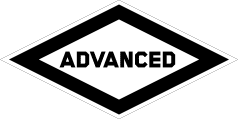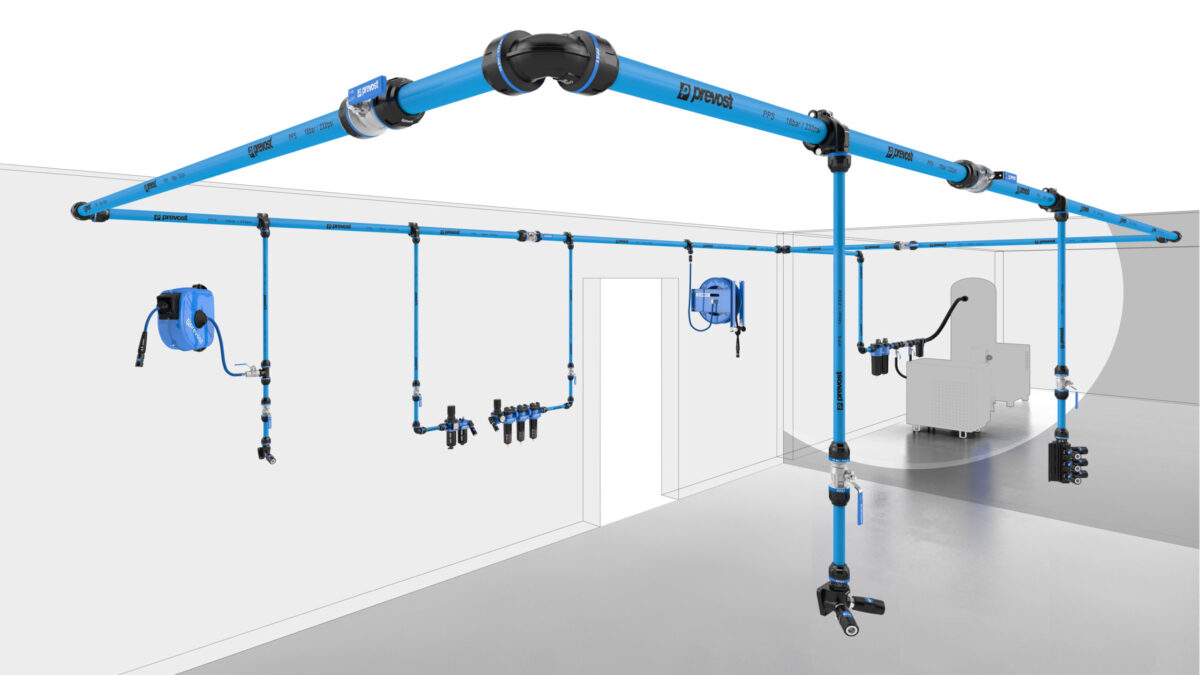Running your shop or facility on compressed air hoses can be a great way to get your business off the ground initially, but it’s not a great long-term solution. They’re messy, can cause issues with catching on items, and can cause serious safety risks. For better occupational safety, getting those hoses off the ground in favor of air pipe that can be run overhead to drop points makes it easier for employees to avoid tripping over an air compressor line that wasn’t there a minute ago. This can make a big difference in your shop’s operations, keeping your workers safe and production moving efficiently.
But what kind of air pipe should you use? There is a wide range of available options that you could turn to, from the cheap and dangerous, to expensive and long-lasting options, to the gold standard that won’t cost you a mint, saving your budget significant harm without requiring replacement every few years. In this article, we’ll cover all of the popular types of compressed air system piping that is available to the market, including some that you should avoid at all costs to prevent injury to personnel or damage to your pneumatic tooling
Common Types of Piping used for Compressed Air Lines
There are many kinds of air pipe you can put to use, including copper piping, plastic piping, aluminum piping, stainless steel piping, and black iron piping. But while some of these are an excellent choice for your shop, others will have a prohibitively high cost and yet others will have safety issues or cause rust contamination in your pneumatic tooling. Let’s look at the most common types of air pipe available for running compressed air lines from your rotary screw compressor in your compressor room to your pneumatic tooling drop lines so that you can select the best pipe for the job.
Black Iron or Steel Pipe
Let’s start with the old standby, one of the first types of metal pipes used in air distribution. There are three different types of ferrous pipe, including galvanized, black iron, and stainless steel pipe. Galvanized should be avoided at all costs, because the anti-corrosive zinc lining can flake off and wreck your pneumatic tooling. Black pipe doesn’t have the galvanization, but instead can rust if exposed to moisture in your air piping from your air compressor, causing rust contamination in your tools. Stainless steel pipe is a better option, as it has significant resistance to corrosion, but is also more expensive to purchase and install. In any case, the ferrous air pipe will be heavy, require expertise to weld or connect with fasteners, and will have potential failure points at those connections.
Copper Pipe
There’s something beautiful about a shop with its air supply plumbed in copper pipe in a steam-punk kind of way, and its resistance to high temperature, reliable air flow, and smaller inner diameter (i.d.) to outer diameter (o.d.) ratio means it takes up less space than thicker, larger pipe options. It’s also lighter weight than iron pipes, has strong natural corrosion resistance in all but the most hostile environments, and it’s fairly easy to obtain fittings for your system at a local store if you need to make a quick repair or expand your system to one or two more workstations. However, the additional expense of copper pipe often outweighs the many benefits that this material brings to the table. Given that the price of copper in the commodities markets is showing no sign of dropping after the last several years, this can make this type of air pipe above many shop budgets.
Aluminum Pipe
Though originally difficult to find and more expensive, aluminum pipe has become much more popular and lower in cost for compressed air systems in the past two decades. Commonly used for construction or retrofits in industrial plants, high-quality aluminum piping is very cost-effective, lightweight, and corrosion resistant. This makes them ideal for consistent air flow and fast installation, because they don’t require the complex installation processes of copper or ferrous piping systems. It’s also very resistant to leaking, comes in a wide range of sizes, and deals well with a range of different temperatures. Though it may not be as freely available as other options, it’s well worth the weight to plumb your air distribution system in aluminum.
PVC Pipe
PVC piping can seem like a great, inexpensive option for handling compressed air lines given its lower energy costs to produce, causing a lower overall acquisition cost, but these plastic pipes hold a dangerous secret that can shortcut your company’s success. As exposure to oil, heat, and the passage of time increases, PVC lines become more and more brittle, degrading to the point that the cheap, reliable lines you’ve used the past year or so suddenly give way. Instead of simply splitting and causing a pressure drop, the PVC shatters, creating tons of sharp, jagged shrapnel as it blows out in every direction, dropping pressure and injuring workers. For this reason, the Occupational Health and Safety Administration (OSHA) as well as other occupational health administration agencies have prohibited the use of PVC pipe in compressed air lines. This same caution should be used with plastic flexible tubing, which may also age poorly.
What Size Pipe should I use for my Air Compressor?
Generally speaking, most piping sizes for your compressed air system will be based on how many cubic feet per minute (CFM) your system will be using at its highest production demand point. If you’re planning a future expansion, start with your expected usage rather than actual usage to provide a buffer and allow simple expansion, rather than replacement, of your compressed air piping. These measurements are based on the inner diameter of the pipe, which makes the pipe’s thickness irrelevant to the volume of air that is moved.
- 1/2″ piping: up to 25 CFM
- 3/4″ piping: 25 to 50 CFM
- 1″ piping: 50 to 100 CFM
- 1-1/4″ piping: 100 to 200 CFM
- 1-1/2″ piping: 200 to 400 CFM
- 2″ or larger piping: over 400 CFM
By keeping within these piping ranges, you’ll be able to enjoy constant compressed air pressure at your pneumatic tooling systems without suffering regular pressure drops and the impact that can have on your production process. If you’re dealing with tight spaces, you’ll want to consider your compressed air piping material carefully, as thicker-walled material such as iron and plastic pipe will take up more space than thinner-walled copper and aluminum piping.
Compressed Air Piping with AAV
When you’re trying to find the best compressed air pipe for your needs, it can be difficult to make sure you’re making the right decision. At Advanced Air & Vacuum, we’ve spent the past two decades helping our customers find the right solutions for their businesses. For this reason, when we find a truly remarkable product for our industry, we work hard to make sure we can secure suppliers for our customer’s needs. Among those remarkable products is the Prevost Piping System, a compressed air system based on 100% aluminum materials.
By creating a solid air compressor network that is built to stand the test of time and provide constant, high pressure air flow to each of your workstations, the Prevost Piping System is lightweight and more compact, with PPS1 aluminum fittings to provide a more resilient air supply system. It features exceptional mechanical resistance to both average daily pressure as well as to impacts that would damage lesser materials. It’s also resistant to compressor lubricants and oils, preventing damage to your system if a change is made. Featuring an exterior epoxy paint and an interior treatment, the aluminum alloy piping is well-protected against any oxidation or corrosion risks.
The Prevost Piping System is completely modular and scalable, with the PPS1 fittings making upgrades and changes very easy to pull off due to its adaptability. To assemble your system, the lightweight aluminum piping is simply lifted and inserted into the fitting, and the strong PPS1 fitting is then tightened around it, creating a strong, leak-resistant connection. Developed with the company’s patented design, the PPS Grip Concept ensures that you have a flawless connection and zero leaks, making it easier to avoid pressure loss in your air flow. Because the inner pipe surface is perfectly smooth, there is a low level of friction and a larger internal diameter, allowing you to move more air without turbulence in the same space as other types of piping.
If you have any questions about selecting, installing, and maintaining the right pipe system for your compressed air needs, in addition to design assistance for your piping layout to gain the best possible performance, the experienced professionals at Advanced Air & Vacuum are ready to help. Please feel free to contact us today with any concerns, for more details on the right compressed air system for your business, or to get a quote on a high-performance compressed air pipe system for your company’s needs.

